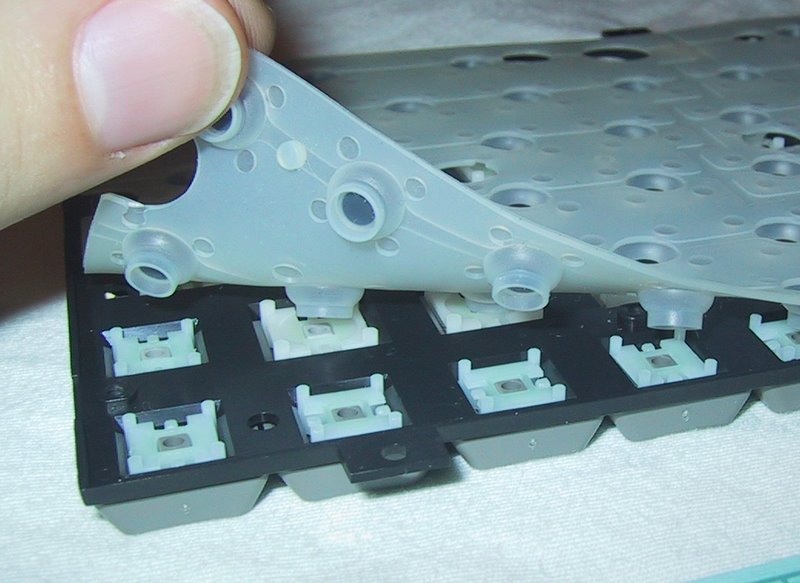Membrane Change Technology: The Key to Reputable and Cost-efficient Interfaces
Membrane layer switch innovation has emerged as a crucial component in the layout of individual interfaces, supplying both reliability and cost-effectiveness across a diverse range of applications. As we discover the diverse benefits of membrane switches, their possibility for advancement increases questions about future applications and evolving trends.
Recognizing Membrane Layer Change Innovation
Membrane switch technology is a commonly utilized user interface option in various electronic gadgets, supplying a seamless mix of capability and layout. This modern technology integrates multiple layers of materials, generally containing a visuals overlay, spacer layer, and a circuit layer. The graphic overlay displays the user interface aspects, while the spacer layer separates the circuit layer from the overlay until a customer turns on a switch.
When stress is used to the overlay, the circuit layer completes the electric circuit, sending out a signal to the gadget. This system enables various arrangements, including tactile responses and backlighting options, boosting user communication. Membrane switches are usually manufactured utilizing long lasting products such as polyester or polycarbonate, making sure long life and resistance to ecological elements like dampness and dirt.
The convenience of membrane switches allows their application in varied industries, consisting of medical tools, customer electronics, and industrial controls. Their small layout enables for assimilation into space-constrained settings, providing a reliable customer interface without compromising aesthetic appeal. Recognizing the complexities of membrane layer switch technology is necessary for producers and developers seeking to develop trustworthy and efficient human-machine interfaces.
Trick Advantages of Membrane Buttons
While different interface options exist, membrane changes offer distinctive advantages that make them a recommended selection in various applications. One of the main benefits is their longevity; membrane layer switches are designed to withstand rough ecological problems, consisting of wetness, dirt, and temperature variations, making certain long-lasting performance. This strength considerably lowers the need for constant replacements, therefore lowering general upkeep prices.

Furthermore, membrane switches are light-weight and small, making them appropriate for applications where room is restricted. Their low-profile design adds to a streamlined look without compromising capability.
Cost-effectiveness is also a significant advantage, as the production procedure for membrane layer switches tends to be cheaper contrasted to traditional mechanical buttons. This price, integrated with their integrity and convenience of setup, placements membrane switches as a functional remedy for a large range of industries looking for efficient and efficient individual interfaces.
Applications Across Numerous Industries
How do membrane switches adapt to the diverse requirements of numerous industries? Membrane switch modern technology is significantly recognized for its convenience, making it suitable for a broad array of applications across numerous fields.
In customer electronics, membrane layer switches provide a small remedy for remotes and home appliances, improving user experience with instinctive layout. Furthermore, the commercial industry leverages membrane layer buttons for equipment control board, gaining from their resistance to extreme atmospheres, such as wetness and dirt.
Army and aerospace applications likewise use membrane layer switches for their dependability and capability to stand up to severe problems, making certain operational effectiveness in important situations. Additionally, the food and beverage market embraces these switches for automated systems, where sanitation and ease of operation are vital. Ultimately, membrane layer buttons are customized to satisfy the distinct demands of each industry, confirming their crucial function Clicking Here in modern-day innovation interfaces
Design and Modification Options

In the world of membrane button innovation, layout and personalization options play a crucial function in enhancing capability and individual interaction. These buttons can be tailored to fulfill certain operational needs and aesthetic choices, making them versatile components in different applications.
One of the main customization alternatives is the layout of the switch itself, which can be created to accommodate one-of-a-kind user interfaces and ergonomic considerations. By changing the shape, dimension, view website and plan of buttons, producers can develop user-friendly layouts that assist in ease of use. In addition, the consolidation of various colors and visuals overlays enables branding and enhanced presence, making sure that users can quickly recognize functions.
Additionally, membrane layer switches can be engineered with different responsive feedback systems, such as elevated buttons or distinct clicks, to boost the user experience. Various products can also be picked for toughness and ecological resistance, dealing with aspects such as moisture, temperature changes, and chemical direct exposure.
Ultimately, the substantial layout and customization choices offered in membrane layer button technology equip organizations to create tailored services that not just fulfill useful needs but also line up with their branding and functional requirements.

Future Patterns in Membrane Switches
As membrane button modern technology proceeds to evolve, future patterns are progressively focused on improving individual experience and incorporating innovative capabilities. One significant pattern is the integration of touch-sensitive and capacitive technologies right into conventional membrane layer buttons. This growth allows for more instinctive interface, giving tactile comments while keeping a streamlined layout.
An additional arising fad is making use of eco-friendly materials, driven by the growing need for lasting production methods. Makers are looking for to minimize their carbon footprint by utilizing recyclable substratums and low-impact inks, aligning with global sustainability objectives.
In addition, the surge of the Net of Points (IoT) is motivating the consolidation of clever attributes right into membrane switches. Improved connectivity options will make it possible for tools to connect with each various other, enabling seamless integration right into wider systems.
Additionally, advancements in printing technologies, such as electronic printing, are enabling for greater layout adaptability and personalization. This makes it possible for producers to produce complex styles and vibrant shades cost-effectively.

Final Thought
In verdict, membrane button technology represents an important technology in user interface design, using significant advantages in durability, personalization, and cost-effectiveness. As advancements continue to arise, specifically navigate to this website in touch-sensitive interfaces and sustainable products, the potential for membrane layer switches to enhance customer experience and functionality continues to be encouraging.
Comments on “The Role of Membrane Switches in Boosting Product Durability and Efficiency”